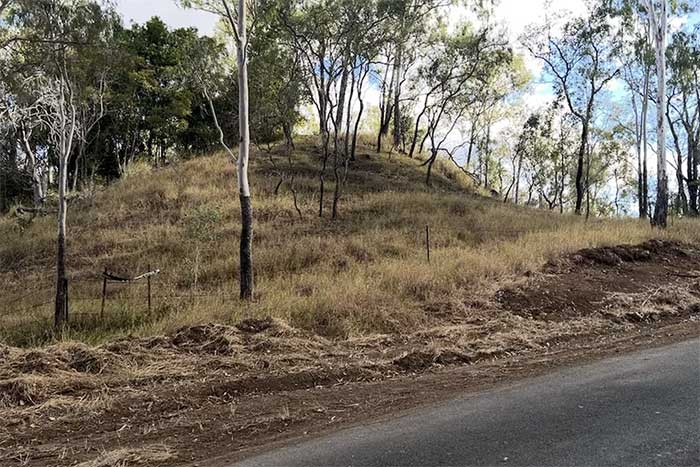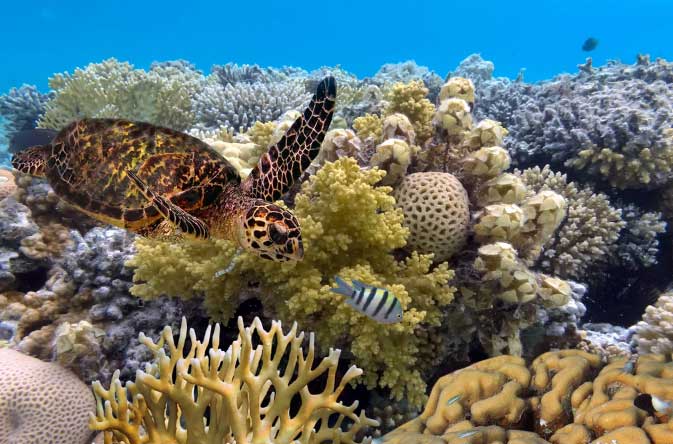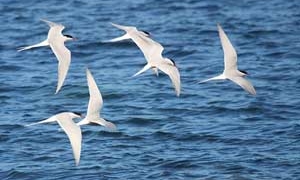What appears to be a stack of natural gray limestone is actually the remains of coral, which holds significant importance for the global ecosystem.
In a barren area of North Burnett, Queensland, Australia, where livestock can be seen grazing calmly by the roadside, there are peculiar formations that resemble limestone stacked upon one another.

The fossilized coral reefs in North Burnett now look like part of the terrestrial landscape. (Photo: ABC).
“If you drive past, you might easily overlook them because they blend in so naturally with the scenery,” said Professor Gregg Webb, a paleontologist.
However, few are aware that these formations were once part of the Cannindah coral reef, dating back over 300 million years. Today, what remains are a series of fossils arranged into mounds, contributing to the landscape of the area.
According to Professor Webb, the Cannindah reef was the largest known coral reef from the Mississippian period, also known as the Carboniferous period.
This was one of the most extreme periods of climate change in Earth’s history. Following this period, the oceans covered nearly the entire surface of the planet and persisted for about 40 million years.
Thus, these “living witnesses” from this era play an important role in providing lessons for the future as Earth’s climate changes once again.
“By studying these fossilized reefs, we can learn what happened to that type of ecosystem,” Professor Webb asserted. “The more we know about these changes, the better we understand what we might face in the future.”

Coral is vital for marine ecosystems. (Photo: Getty).
Professor Tran Nghi, a marine geology expert, explained that corals typically thrive by attaching to reefs and islands located 10 to 20 meters below the water’s surface, where sunlight is always available.
The ability of corals to live and grow plays a crucial role in providing shelter and food for many marine species.
“Coral is an extremely important ecosystem. It serves as a common home for all other marine creatures, providing refuge for numerous fish, mollusks, algae, and more that live within the coral,” Professor Nghi shared.
According to Natural History, global coral reefs are estimated to be worth approximately £6 trillion, with around 500 million people around the world depending on them for food and employment.
Coral also acts as a barrier, reducing the impact of ocean waves by up to 97%, helping to protect humans from threats such as erosion and tsunamis.
They also help maintain areas like mangroves and seagrass beds, creating valuable coastal ecosystems for human exploitation.
However, in the face of challenges posed by climate change and direct human impact, many coral reefs are disappearing from the natural environment or experiencing severe declines.
A 2022 report indicated that the living and thriving coral populations in the Caribbean region of the western Atlantic have decreased to just 8% of their original numbers. Previously, in the 1970s, corals maintained a level of 50%.




















































